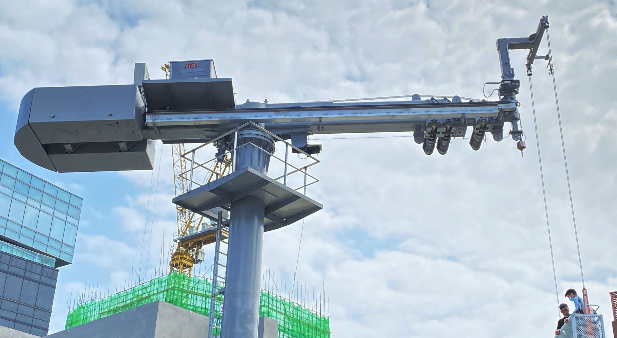The Rise of Modern Web Design in Singapore
Web design has rapidly transformed in Singapore, moving far beyond static pages and simple layouts. Businesses today understand that their website is often the first touchpoint with potential customers, making it essential to offer an engaging digital presence. Singapore, being a hub for innovation and technology, has seen an exponential rise in companies investing heavily in modern web design to meet changing consumer expectations. With an internet-savvy population, users expect websites to be fast, responsive, and visually appealing across all devices. Mobile usage in particular has driven the need for fluid and adaptive layouts, ensuring that browsing feels effortless. As e-commerce continues to flourish in the country, the importance of creating websites that blend aesthetics with functionality has never been greater. This rise highlights the way modern web design Singapore has evolved from being a supporting tool to a central driver of digital success.
Core Principles of Modern Web Design Singapore
Modern web design is not just about creating something attractive; it focuses on usability, performance, and inclusivity. Clean layouts with clear navigation make it easier for visitors to find what they need without frustration. Websites today must load quickly and provide a seamless experience, as users are likely to leave if a page is slow or cluttered. Accessibility is also a crucial aspect, ensuring that people of all abilities can engage with digital platforms comfortably. Businesses that prioritize user experience often see higher engagement and stronger brand loyalty. Another principle is consistency in design elements, from fonts and colors to call-to-action buttons, which builds trust and recognition. User-centric thinking places the audience at the heart of every decision, ensuring that the design serves practical needs while maintaining visual appeal. These principles together define what makes modern web design Singapore effective and competitive.
Key Trends Shaping Modern Web Design Singapore
Singapore’s web design industry thrives on adopting new digital trends that enhance user experience and set brands apart. Minimalism is a leading trend, with clean visuals and generous white space making content more digestible. Dark mode options are also becoming popular, providing a sleek aesthetic while reducing eye strain for users. Motion graphics and micro-interactions add dynamic elements that captivate attention and encourage interaction. Personalization, powered by artificial intelligence, ensures that users feel connected by receiving tailored recommendations or content based on their behavior. Visual storytelling, paired with high-quality imagery and videos, further enriches user engagement. These design trends are not just aesthetic; they influence how effectively businesses communicate their message and convert visitors into customers. Modern web design Singapore continues to evolve as new innovations and user preferences shape the industry’s direction.
Why Businesses in Singapore Invest in Modern Web Design
A professional and modern website instantly builds credibility, helping businesses establish trust with potential customers. In a highly competitive market like Singapore, companies cannot afford to rely on outdated websites that look unprofessional or are difficult to use. A modern website improves customer engagement by making the browsing process enjoyable and intuitive. This not only increases time spent on the site but also boosts conversions. Businesses also recognize that their website reflects their brand identity, and a strong design can differentiate them from competitors. The financial impact of a well-crafted website is significant, as it often drives lead generation and supports long-term growth. By investing in modern web design Singapore, businesses future-proof their digital presence while creating meaningful connections with their audience.
The Role of Technology in Modern Web Design Singapore
Technology is at the core of modern web design, shaping the way websites are built and optimized. Content management systems like WordPress, Shopify, and custom-built solutions allow businesses to manage their sites with greater flexibility. Data analytics tools enable continuous improvements by tracking user behavior and identifying areas for enhancement. Integrating SEO into web structures ensures that websites are not only visually appealing but also visible in search rankings. Security is another critical component, as users expect safe browsing experiences free from risks of data breaches. Cloud hosting and scalable frameworks allow businesses to adapt to traffic demands without compromising performance. Interactive features such as chatbots and dynamic content also enhance customer experiences. With these technologies, modern web design Singapore empowers businesses to create efficient, secure, and user-friendly platforms that deliver results.
Cultural and Market-Specific Influences on Web Design in Singapore
Design in Singapore reflects the country’s unique multicultural and multilingual environment. Websites often cater to diverse audiences, with bilingual or multilingual options being essential for broader reach. Cultural considerations also influence visual styles, tone, and messaging, ensuring that content resonates with local users. Singapore’s tech-savvy consumers expect websites to align with both global standards and regional preferences. For example, an emphasis on efficiency and precision often shapes the way websites are structured, reflecting Singaporean values. Local businesses must balance global design trends with their own brand identity to remain authentic and competitive. This cultural awareness ensures that modern web design Singapore not only looks good but also connects meaningfully with its audience.
Best Practices for Businesses Seeking Modern Web Design Singapore
Companies looking to enhance their digital presence should focus on several key practices. Choosing the right design agency or partner is critical, as expertise plays a huge role in delivering results. A strong website must include essential features such as:
- Clear calls-to-action
- Responsive design across devices
- Chatbots or live chat for real-time support
- Optimized images and media for speed
- Secure SSL certificates for user safety
Regular updates and testing are equally important, ensuring that the website remains relevant and functional over time. Businesses should also prioritize data-driven improvements by analyzing traffic and user engagement patterns. By applying these practices, organizations ensure their websites reflect modern standards while driving real business outcomes. Ultimately, modern web design Singapore is most effective when approached as an ongoing process rather than a one-time investment.
Future of Modern Web Design Singapore
Looking ahead, the future of web design in Singapore promises even more innovation. Artificial intelligence will play a bigger role in personalization, offering users tailored experiences that meet their unique preferences. Voice search optimization is another emerging trend, reflecting the popularity of smart devices and conversational design. Virtual and augmented reality may soon become integral to e-commerce, allowing users to interact with products in immersive ways. Sustainability is also gaining importance, with eco-friendly hosting and minimalistic coding practices reducing the digital carbon footprint. As technologies continue to advance, businesses that stay adaptable will benefit the most. The future of modern web design Singapore is not just about keeping up with trends but anticipating them and building strategies that last.
Frequently Asked Questions (FAQ)
1. What makes modern web design different from traditional design?
Modern web design emphasizes user experience, responsiveness, and interactivity, while traditional design often focused on static visuals and limited functionality.
2. How much does modern web design cost in Singapore?
Costs vary widely depending on complexity, features, and the agency or developer chosen, but businesses should see it as a long-term investment in growth.
3. Why is mobile-first design essential in Singapore?
With a majority of users browsing on mobile devices, mobile-first design ensures seamless performance and accessibility across all screen sizes.
4. How long does it take to build a modern website in Singapore?
Timelines range from a few weeks to several months, depending on project scale, customization needs, and testing requirements.
5. Can small businesses benefit from modern web design trends?
Yes, small businesses can leverage modern design to establish credibility, attract customers, and compete effectively in digital markets.
Takeaway
Modern web design Singapore is more than just a trend; it is a strategic necessity for businesses aiming to thrive in today’s digital-first environment. By focusing on user experience, embracing emerging technologies, and adapting to local cultural nuances, companies can create websites that not only attract but also retain customers. With evolving trends such as AI-driven personalization, immersive experiences, and sustainable practices, the future of web design in Singapore is both exciting and full of opportunity. Businesses that act now to prioritize modern web design will set themselves apart in a competitive landscape and position themselves for long-term digital success.











